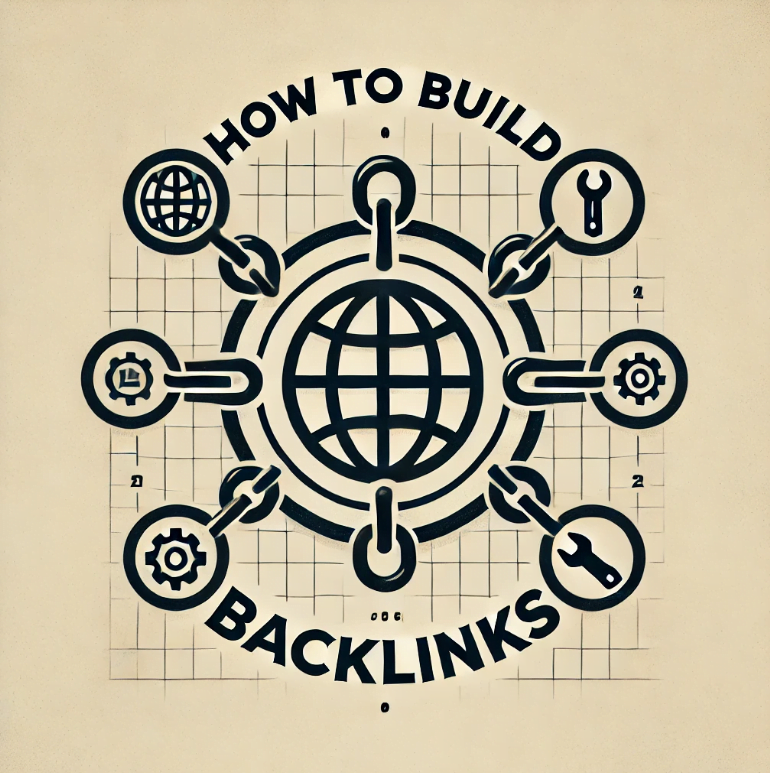How to Build Backlinks
Backlinking involves acquiring inbound links from other websites to your own. These links act as votes of confidence, signalling to search engines that your content is valuable and authoritative. In this guide, By implementing a link strategy that includes content marketing, guest blogging, backlink outreach, and competitor backlink analysis, you can acquire high-quality inbound links that will improve your site’s authority. Remember to adhere to white hat link building practices and continuously monitor and adjust your approach for the best results.
Understanding Backlinks
Backlinks, also known as inbound links or incoming links, are created when one website links to another. These links are essential for off-page SEO as they help search engines evaluate the credibility and relevance of your site. There are several types of backlinks, including editorial links, contextual backlinks, and anchor text links.
Types of Backlinks
- Editorial Links: These are links given naturally by other websites because they find your content valuable.
- Contextual Backlinks: Links placed within the content of a page, relevant to the context.
- Anchor Text Links: These are links where the clickable text is hyperlinked.
Why Backlinks Matter
Backlinks are a significant ranking factor for search engines like Google. High-quality authority links from reputable sites can improve your site’s backlink profile and boost its ranking. Link juice is the value passed from one site to another through backlinks, influencing the ranking potential of your pages.
Strategies for Building Backlinks
1. Content Marketing
Creating high-quality, shareable content is the cornerstone of effective link earning. When you produce valuable content, other websites are more likely to link to it. This can include blog posts, infographics, videos, and comprehensive guides.
2. Guest Blogging
Guest blogging involves writing articles for other websites in your niche. In return, you get a backlink to your site. This not only builds SEO backlinks but also positions you as an authority in your field.
3. Backlink Outreach
This strategy involves reaching out to other websites and asking them to link to your content. It requires a personalised approach and often involves building relationships with other site owners.
4. Competitor Backlink Analysis
Analyzing the backlink profile of your competitors can reveal valuable link opportunities. Tools like Ahrefs or SEMrush can help you identify where your competitors are getting their backlinks and how you can get similar ones.
5. Broken Link Building
This technique involves finding broken links on other websites and suggesting your content as a replacement. This is a win-win situation: the website owner fixes a broken link, and you gain a backlink.
Implementing a Link Strategy
A successful link strategy involves a combination of the above techniques. It’s important to focus on acquiring quality backlinks rather than a high quantity. Here’s how you can implement an effective strategy:
Step 1: Identify Linkable Assets
Your content must be worth linking to. Identify your best-performing content and consider how you can create more of this high-quality material.
Step 2: Research and Outreach
Use tools to find potential link opportunities. Reach out to websites that might find your content valuable. Personalize your outreach emails to increase your chances of getting a response.
Step 3: Monitor Your Backlinks
Regularly monitor your backlink profile using tools like Google Search Console, Ahrefs, or Moz. This helps you understand which strategies are working and where you might need to adjust your approach.
White Hat vs. Black Hat Link Building
It’s crucial to adhere to white hat link building techniques. These are ethical methods approved by search engines, such as creating valuable content and legitimate outreach. Black hat techniques, like buying links or using automated link-building tools, can result in penalties from search engines.
Advanced Link Building Techniques
1. Skyscraper Technique
The Skyscraper Technique involves finding high-performing content in your niche, creating something even better, and reaching out to the sites linking to the original content.
2. Resource Page Link Building
Identify resource pages in your industry and suggest your content as a valuable addition. These pages are specifically created to link out to useful resources.
3. Participating in Forums and Q&A Sites
Engage in forums like Reddit or Q&A sites like Quora. Provide valuable answers and include links to your content where relevant. Ensure your contributions are genuinely helpful and not purely self-promotional.
The Role of Social Media in Link Building
While social media links are typically nofollow links, they can still drive traffic and indirectly influence your SEO by increasing content visibility and potential for earning dofollow links. Share your content across social platforms to reach a broader audience.
Measuring Link Building Success
To measure the success of your link building efforts, track metrics such as:
- Number of backlinks acquired
- Domain Authority (DA) and Page Authority (PA) improvements
- Referral traffic from backlinks
- Keyword rankings for targeted terms
Use tools like Google Analytics and backlink analysis tools to gather data and refine your strategies.
Common Link Building Mistakes to Avoid
- Focusing on Quantity Over Quality: Prioritize high-quality, relevant backlinks over sheer numbers.
- Ignoring Relevance: Ensure the sites linking to you are relevant to your industry.
- Using Black Hat Techniques: Avoid tactics like buying links or participating in link farms.
If you are looking for a professional link building service then contact First Place SEO today for off page technical SEO backlinks.

